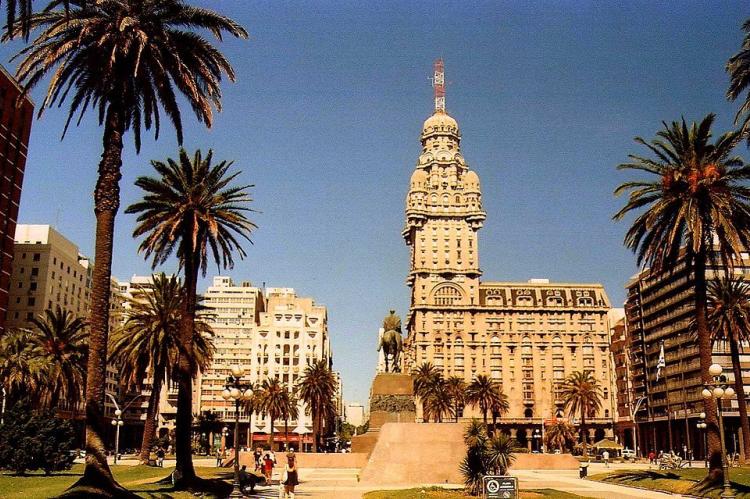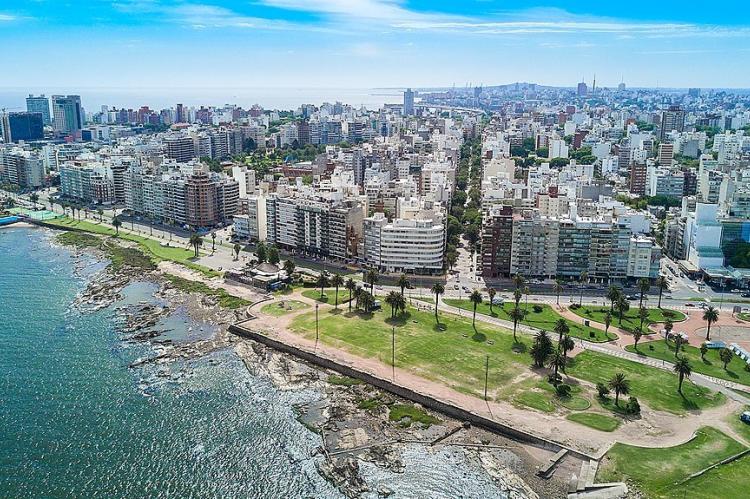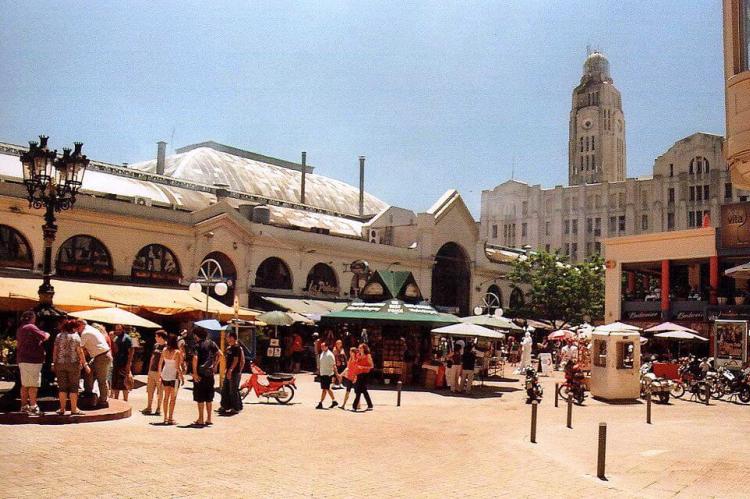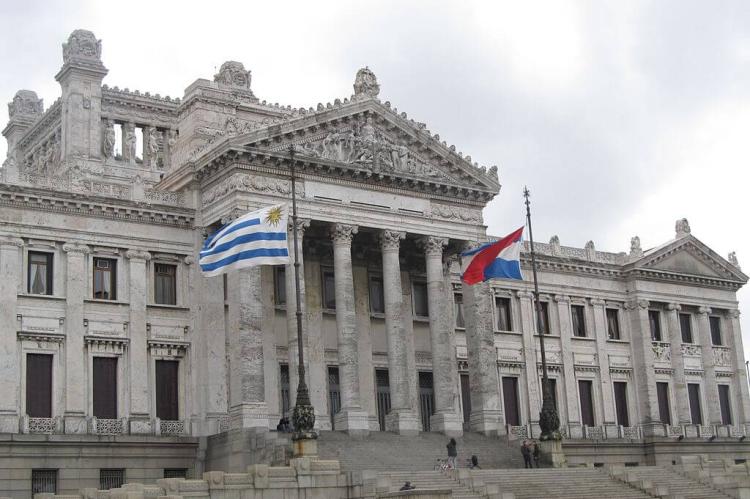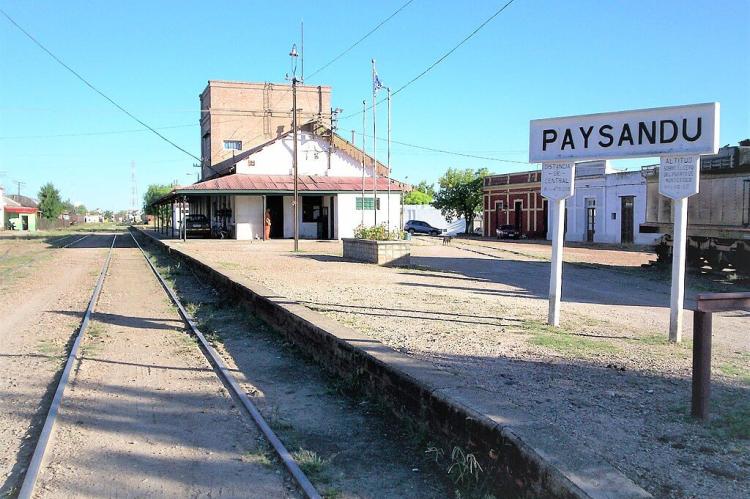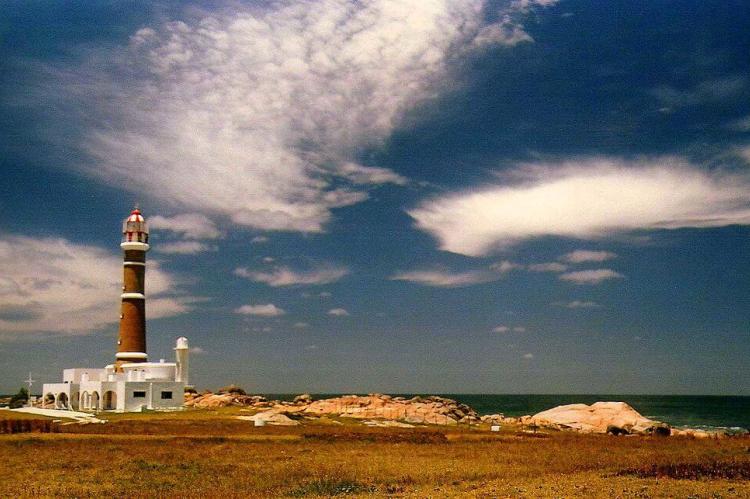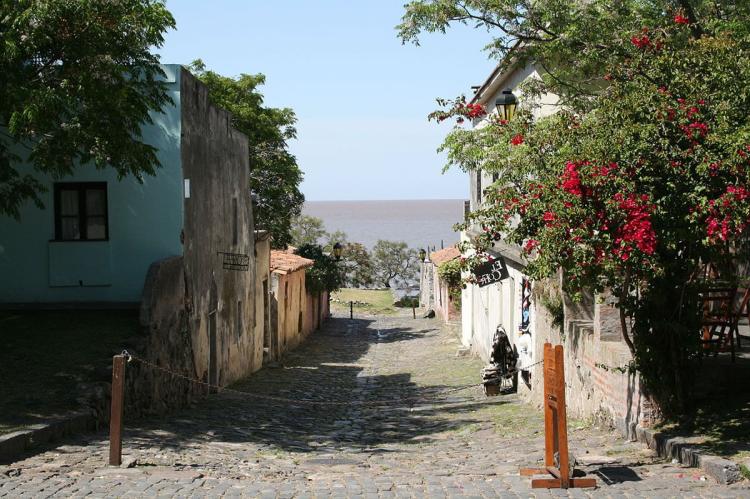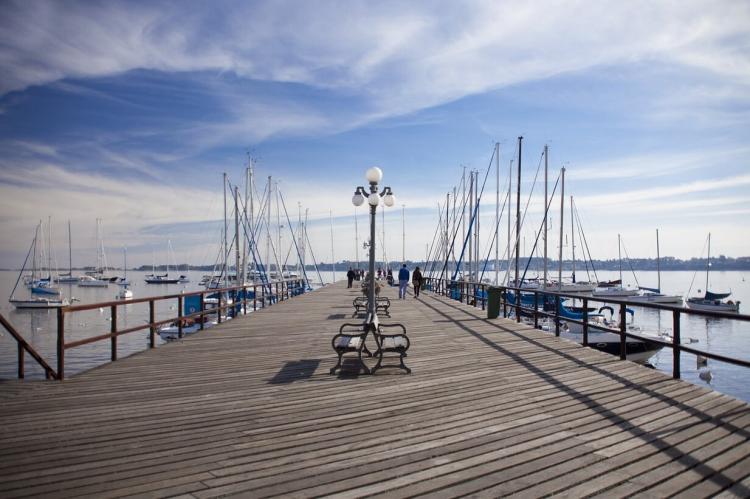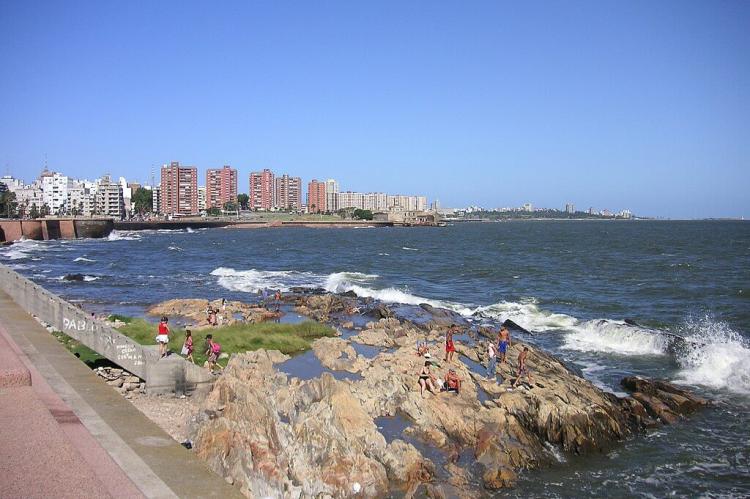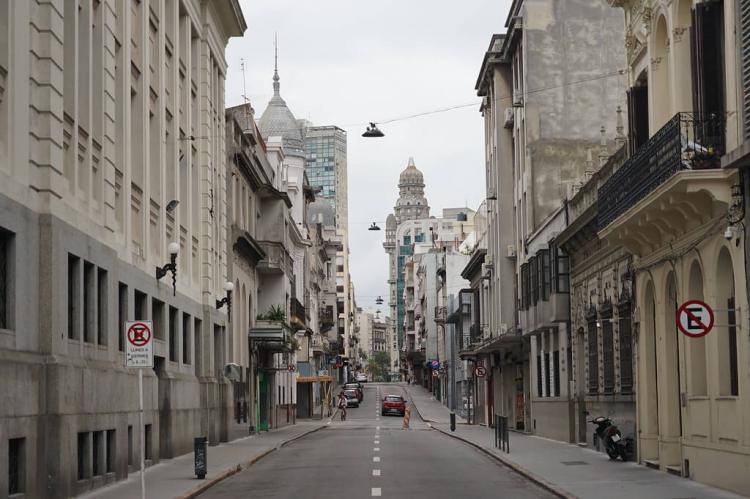Uruguay: Cultural Landscape
Uruguay, located between Brazil and Argentina in South America, has a rich cultural landscape shaped by its history, indigenous heritage, European influences, and modern developments. These aspects represent a country with diverse traditions, influences, and a vibrant artistic and social scene.
The Cultural Landscape of Uruguay
Uruguay, a small South American country between Brazil and Argentina, has a rich and diverse cultural landscape. Its culture blends indigenous roots, European influences, rural traditions, vibrant festivals, intellectualism, and a love for sports and the arts.
-
Indigenous Roots: Uruguay's cultural heritage traces back to its indigenous population, primarily the Charrúa people. Although their numbers are small today, their influence is still acknowledged and celebrated in the country.
-
Spanish Influence: Like many Latin American countries, Uruguay was colonized by the Spanish in the 16th century. Spanish language, traditions, and Catholicism form the foundation of Uruguayan culture.
-
European Immigration: Uruguay experienced significant waves of immigration, primarily from Europe, during the 19th and 20th centuries. Immigrants from Italy, Spain, Germany, and other European countries brought their customs, languages, and culinary traditions, contributing to the nation's multicultural fabric.
-
Gauchos and Rural Traditions: Uruguay has a solid rural heritage, with the figure of the gaucho (cowboy) symbolizing the country's pastoral traditions. The gaucho culture is known for its horsemanship, traditional clothing, folk music (payada), and asados (barbecues).
-
Carnival: Uruguayans are passionate about their carnival celebrations, which rival its larger neighbors. Montevideo, the capital city, hosts one of the longest carnival seasons in the world, featuring vibrant parades, music, dancing, and colorful costumes.
-
Literature and Intellectualism: Uruguay has a strong literary tradition, with renowned writers such as Juan Carlos Onetti, Mario Benedetti, and Idea Vilariño. The country values intellectual pursuits and has a high literacy rate.
-
Football Culture: Football (soccer) holds immense importance in Uruguayan society. The national team's success, including winning the first-ever World Cup in 1930, has fueled a deep passion for the sport, and football clubs are integral to local communities.
-
Music and Dance: Music plays a central role in Uruguayan culture. Tango and milonga, originating in neighboring Argentina, have found a prominent place in the country's music scene. Candombe, a rhythm brought by enslaved Africans, is also essential to Uruguayan identity.
-
Art and Architecture: Uruguay has a thriving arts scene, with numerous museums, galleries, and street art displays. The country is known for its modernist architectural heritage, with buildings designed by renowned architects like Eladio Dieste and Julio Vilamajó.
-
Mate Culture: Mate (pronounced mah-teh), a traditional herbal infusion, is a significant part of Uruguayan social life. Drinking mate is a communal activity, fostering connections and friendships among people of all ages.
Contemporary Influences on Uruguayan Culture
These are just a few of the contemporary influences on Uruguayan culture. The country is a dynamic and evolving society whose culture constantly changes.
-
Globalization: Uruguay is a small country with just over 3 million people. As a result, it is heavily influenced by globalization. This can be seen in the country's cuisine, a mix of European, African, and South American influences, and in its music, which blends traditional Uruguayan rhythms with Latin American and global sounds.
-
Immigration: Uruguay has a long history of immigration, which continues to be a significant factor in shaping the country's culture. In recent years, there has been a substantial increase in the number of immigrants from China, Brazil, and Argentina. These immigrants have brought their own cultures with them, which has added to the diversity of Uruguayan society.
-
Technology: Technology is another significant influence on Uruguayan culture. The Internet and mobile phones have become ubiquitous in Uruguay, profoundly impacting how people communicate, learn, and consume entertainment.
-
The Arts: The arts are also a significant force in Uruguayan culture. The country has a thriving theater scene, vibrant music, and a growing visual arts scene. The arts are a way for Uruguayans to express their identity and connect.
Challenges Facing Uruguayan Culture
These are just some of the challenges facing Uruguayan culture today. The country faces several complex challenges but is also a resilient society with a rich culture. It remains to be seen how Uruguayans will overcome these challenges and shape their culture in the future.
-
Depopulation: Uruguay has been experiencing a steady decline in population for several years. This is due to several factors, including a low birth rate, an aging population, and high emigration rates. The population decline is having a negative impact on Uruguayan culture, as it is leading to the loss of traditional customs and practices.
-
Economic Inequality: Uruguay has a relatively high level of economic inequality. This is due to several factors, including the country's history of dictatorship, its reliance on agriculture, and proximity to Brazil. The economic disparity is causing social tensions and is making it difficult for Uruguayans to share in the country's economic prosperity.
-
Environmental Degradation: Uruguay faces several environmental challenges, including deforestation, pollution, and climate change. These challenges are having a negative impact on the country's natural resources and are threatening the livelihoods of many Uruguayans.
-
Political Polarization: Uruguay has a long history of political stability. However, the country has become increasingly polarized in recent years. This polarization makes it difficult for the government to address the country's challenges.
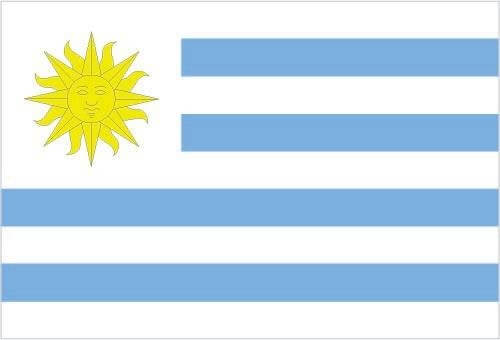
Official flag of Uruguay
Cultural Geography of Uruguay
Largest Cities / Metro Areas
Ranked by population estimate (2022):
-
Montevideo (1,319,000 / 1,961,000): Montevideo is the capital and largest city of Uruguay. It is located on the country's southern coast, on the Río de la Plata estuary. The city is a major commerce, finance, culture, and tourism center. Montevideo is a relatively young city, founded in 1726 by the Spanish. It proliferated in the 19th century, becoming a major port city and a center of trade and commerce. In the 20th century, Montevideo became a popular destination for European immigrants, who helped to shape the city's culture and character. Today, Montevideo is a vibrant and cosmopolitan city, home to various museums, theaters, and art galleries. In addition to the Ciudad Vieja (Old Town) historic district, there are many parks and gardens and a long waterfront promenade known as the Rambla.
-
Salto (104,000 / 244,000): Salto is a city located in northwestern Uruguay, near the border with Argentina. It is the second-largest city in the country and serves as the capital of the Salto Department. Salto is a popular tourist destination for its hot springs, wineries, and colonial architecture. The Salto Grande Dam is the largest hydroelectric dam in South America. It is located on the Uruguay River, just outside of Salto.
-
Ciudad de la Costa (95,000 / 189,000): Ciudad de la Costa, also known as "La Costa," is a city in Canelones Department, Uruguay, on the banks of the Río de la Plata between the streams Arroyo Carrasco and Arroyo Pando. It is considered an extension of the metropolitan area of Montevideo, which borders to the west, while to the east, it borders Costa de Oro. Ciudad de la Costa is a popular tourist destination for its beaches, resorts, and restaurants.
-
Paysandú (76,000 / 152,000): Paysandú is a city in western Uruguay, located on the Uruguay River. It is the capital of the Paysandú Department. Paysandú is a popular tourist destination for its historical landmarks, natural attractions, and vibrant culture.
-
Las Piedras (71,000 / 82,000): Las Piedras is a city in the Canelones Department of Uruguay, located about 20 kilometers (12 miles) northwest of Montevideo. The town is a popular tourist destination for its historical landmarks, natural attractions, and vibrant culture. Plaza de la Constitución is the main square in Las Piedras and is home to the city hall, the cathedral, and the Museo Blanes Viale.
-
Rivera (64,000 / 107,000): Rivera is a city in the north of Uruguay, located on the border with Brazil. It is the capital of the Rivera Department. Rivera is a popular tourist destination known for its casinos, duty-free shops, and proximity to the Brazilian city of Santana do Livramento.
-
Maldonado (62,000 / 138,000): Maldonado is the capital of Maldonado Department, Uruguay. It is a coastal city located on the country's southeastern coast, about 100 km (62 mi) east of Montevideo. Maldonado is a popular tourist destination for its beaches, resorts, and restaurants. The resort town of Punta del Este is located about 15 km (9 mi) east of Maldonado, known for its beaches, luxury hotels, and nightlife.
-
Tacuarembó (54,000 / 97,000): Tacuarembó is a city in north-central Uruguay, located about 250 km (155 mi) north of Montevideo. It is the capital of the Tacuarembó Department. Tacuarembó is a popular tourist destination known for its gaucho culture, natural attractions, and festivals.
-
Melo (52,000 / 87,000): Melo is a city in the Cerro Largo Department of Uruguay, located about 350 kilometers (217 miles) northeast of Montevideo. It is the capital of the Cerro Largo Department. Melo is a popular tourist destination for its historical landmarks, natural attractions, and vibrant culture.
-
Mercedes (42,000 / 77,000): Mercedes is a city in the Soriano Department of Uruguay, located about 278 km (173 mi) northwest of Montevideo. It is the capital of the Soriano Department. Mercedes is a popular tourist destination for its historical landmarks and natural attractions.
Administrative Divisions
Uruguay is divided into 19 administrative departments, each with its capital city. Each department has a legislature and chief executive. Departments are further subdivided into municipalities.
Departments
Following is a listing of the departments of Uruguay, along with their capital cities and brief descriptions:
-
Artigas (Capital: Artigas): Located in the northwestern part of Uruguay, Artigas is known for its proximity to the border with Brazil. It is named after the national hero José Gervasio Artigas and features diverse landscapes, including the Cuareim River.
-
Canelones (Capital: Canelones): Canelones is in southern Uruguay, adjacent to the capital, Montevideo. The country's most populous department offers urban areas, rural landscapes, and beautiful beaches along the Costa de Oro.
-
Cerro Largo (Capital: Melo): Cerro Largo is located in the northeastern region of Uruguay and is known for its agricultural activities, including rice and livestock farming. It also has natural attractions like Quebrada de los Cuervos.
-
Colonia (Capital: Colonia del Sacramento): Colonia is in southwestern Uruguay and famous for its well-preserved historic quarter, a UNESCO World Heritage Site. It boasts a rich history, picturesque streets, and beautiful coastal areas.
-
Durazno (Capital: Durazno): Durazno is located in central Uruguay. It is often called the "Heart of Uruguay" due to its strategic location and fertile agricultural land. It hosts the annual Semana de la Patria festival, celebrating Uruguay's independence.
-
Flores (Capital: Trinidad): Flores is located in the southwestern region of Uruguay and is known for its tranquil countryside, agriculture, and small towns. With its well-preserved historic quarter, Trinidad is home to the Gaucho Museum and festival.
-
Florida (Capital: Florida): Florida is located in central Uruguay and is known for its strong ties to rural and agricultural traditions. The region's economy is centered around farming and ranching, making it an important agricultural hub.
-
Lavalleja (Capital: Minas): Lavalleja is situated in the southeast and is known for its picturesque landscapes, including hills, forests, and rivers. Minas is a charming town surrounded by natural beauty.
-
Maldonado (Capital: Maldonado): Maldonado is one of Uruguay's most popular tourist destinations, attracting domestic and international visitors. Punta del Este is one of the region's most glamorous and upscale beach resorts. It features stunning beaches, luxury hotels, fine dining, and a vibrant nightlife.
-
Montevideo (Capital: Montevideo): Montevideo is the capital city of Uruguay and the country's most populous department. It is the political, economic, and cultural heart of Uruguay, offering a vibrant urban experience and numerous cultural attractions.
-
Paysandú (Capital: Paysandú): Paysandú is located in the northwestern part of Uruguay, near the border with Argentina and is known for its riverfront area along the Uruguay River. The city of Paysandú hosts cultural events and offers historical sites.
-
Río Negro (Capital: Fray Bentos): Río Negro is located in the western part of Uruguay. It is known for its historical significance and the UNESCO-listed Fray Bentos Industrial Landscape, a former meat-processing plant.
-
Rivera (Capital: Rivera): Rivera is situated in northern Uruguay and shares a border with Brazil. It is known for its commercial activity, and the city of Rivera is a busy border town.
-
Rocha (Capital: Rocha): Rocha is in the eastern part of Uruguay and is renowned for its pristine beaches, national parks, and laid-back coastal lifestyle. It's a popular destination for eco-tourism.
-
Salto (Capital: Salto): Salto is in the northwestern part of Uruguay and is known for its hot springs, citrus production, and the city of Salto, one of Uruguay's largest cities.
-
San José (Capital: San José de Mayo): San José is located in southern central Uruguay and is known for its agricultural activities, including dairy farming. San José de Mayo is the departmental capital.
-
Soriano (Capital: Mercedes): Soriano is situated in the southwestern part of Uruguay and is known for its picturesque landscapes along the Paraná River. Mercedes is the department's capital.
-
Tacuarembó (Capital: Tacuarembó): Tacuarembó is in northern Uruguay and is known for its gaucho culture and ranching traditions. It's often considered the birthplace of the tango.
-
Treinta y Tres (Capital: Treinta y Tres): Treinta y Tres is located in the northeastern part of Uruguay and is known for its agricultural activities and historical sites. The departmental capital is also named Treinta y Tres.
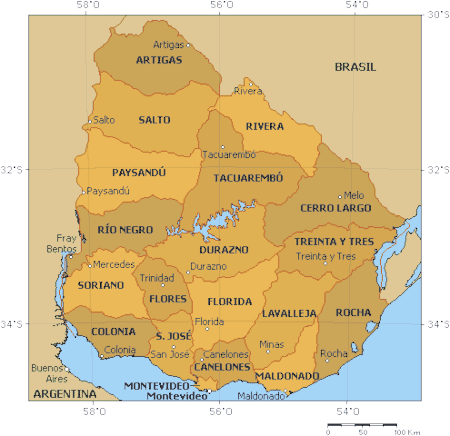
Political map of the Departments of Uruguay
Geographic Regions (Zones)
The country of Uruguay may be divided into four general regions based on social, economic, and geographical factors:
-
Atlantic Coast / Bañados del Este: The Atlantic Coast region stretches east of Montevideo and through the country's south.
-
Río de la Plata: The Greater Montevideo region holds over one-half of Uruguay's population.
-
Central Interior: The Central Interior region features rolling hills and pastures.
-
Northern Interior: The Northern Interior region is a land of ranches, cattle, and horses.
See more: Natural Landscape of Uruguay
Historical, Cultural, and Natural Landmarks
Uruguay offers a rich array of historical, cultural, and natural landmarks. Here are some notable examples in each region or zone:
Atlantic Coast / Bañados del Este
These attractions, protected areas, and national landmarks within the Atlantic Coast/Bañados del Este region of Uruguay showcase the region's natural beauty, biodiversity and the opportunity to experience Uruguay's stunning coastal landscapes.
-
Laguna de Rocha: A coastal lagoon located in the Rocha Department, Laguna de Rocha is a protected area that is an essential habitat for diverse bird species, including migratory birds. It offers opportunities for birdwatching, hiking, and nature observation.
-
Cabo Polonio: A remote and off-the-grid coastal village, Cabo Polonio is a protected area and a national landmark. It is known for its shifting dunes, pristine beaches, and unique ecosystem. Visitors can enjoy the natural beauty, observe sea lions and seals, and experience the tranquility of this unspoiled destination.
-
Santa Teresa National Park: Situated near Punta del Diablo, Santa Teresa National Park is Uruguay's oldest national park. It encompasses a vast area of diverse landscapes, including forests, coastal dunes, and beautiful beaches. The park features the historic Fortaleza de Santa Teresa, which offers insights into Uruguay's colonial past.
-
Valizas Sand Dunes: Located in the Rocha Department, the Valizas Sand Dunes are a striking natural landmark. These towering dunes offer breathtaking views of the coastline and the nearby ocean. Visitors can explore the dunes, hike to the top for panoramic vistas, and enjoy the unique desert-like environment.
-
Laguna Garzón: A picturesque lagoon between José Ignacio and Rocha, Laguna Garzón is known for its calm waters and scenic beauty. It is a popular spot for water sports like kitesurfing, windsurfing, and stand-up paddleboarding. The iconic circular bridge, Puente Laguna Garzón, adds to the area's charm.
-
Punta del Diablo: A laid-back fishing village turned beach destination, Punta del Diablo offers beautiful beaches, relaxed vibes, and a bohemian atmosphere. The town is located within a protected area, and its surroundings boast diverse flora and fauna. Visitors can enjoy sunbathing, surfing, and exploring the nearby Santa Teresa National Park.
-
Laguna de Castillos: Situated near Castillos in the Rocha Department, Laguna de Castillos is a freshwater lagoon surrounded by rolling hills and wetlands. It is a protected area that provides habitats for various bird species and offers activities like kayaking, fishing, and nature walks.
-
Cerro Verde: Located in the Rocha Department, Cerro Verde is a small hill with panoramic views of the surrounding countryside, including Laguna de Castillos. Visitors can hike to the top and enjoy the beautiful landscapes and birdwatching opportunities.
Río de la Plata
The Río de la Plata region of Uruguay encompasses the area along the shores of the Río de la Plata, including the capital city of Montevideo. These attractions, including protected areas, historical sites, and natural landmarks, highlight the region's cultural, historical, and scenic richness.
-
Ciudad Vieja (Old Town) - Montevideo: The historic heart of Montevideo, Ciudad Vieja is known for its colonial architecture, narrow streets, and cultural landmarks such as the Solís Theatre and the Montevideo Metropolitan Cathedral.
-
Rambla de Montevideo: The Rambla is a scenic waterfront promenade that stretches along the coast of Montevideo. It offers beautiful views of the Río de la Plata and is a popular spot for walking, jogging, and enjoying the beach.
-
Mercado del Puerto - Montevideo: Located in the Ciudad Vieja, the Mercado del Puerto is a bustling market known for its barbecue restaurants (parrillas). Visitors can savor delicious grilled meats and experience the lively atmosphere of this historic market.
-
Colonia del Sacramento: A UNESCO World Heritage Site, Colonia del Sacramento is a charming colonial town located on the banks of the Río de la Plata. It boasts cobblestone streets, colorful buildings, and historical sites like the Barrio Histórico and the Lighthouse.
-
Punta del Este: Often called the "St. Tropez of South America," Punta del Este is a glamorous beach resort city known for its luxurious resorts, upscale shopping, and vibrant nightlife. It offers beautiful beaches, the iconic La Mano (The Hand) sculpture, and the nearby Casapueblo art gallery.
-
Piriápolis: Situated along the coast, Piriápolis is a beach resort town known for its picturesque landscapes and elegant architecture. Visitors can enjoy its sandy beaches, explore the Cerro San Antonio viewpoint, and visit the historic Argentino Hotel.
-
Fortaleza del Cerro - Montevideo: Located atop a hill, the Fortaleza del Cerro is a fortress that offers panoramic views of Montevideo and the Río de la Plata. It is a national landmark and a historic site that provides insights into the city's military past.
-
Parque Rodó - Montevideo: Parque Rodó is a large park near the Rambla in Montevideo. It features beautiful gardens, a lake, playgrounds, and cultural attractions like the National Museum of Visual Arts and the Summer Theatre.
-
Juan Díaz de Solís Monument - Montevideo: The Juan Díaz de Solís Monument is a prominent landmark located at the entrance of Montevideo's harbor. It commemorates the arrival of the Spanish explorer and pays homage to Uruguay's maritime history.
-
Río de la Plata Beaches: The Río de la Plata region is known for its expansive beaches along the river's coastline. Popular beach destinations include Malvín, Pocitos, and Carrasco in Montevideo, where visitors can enjoy sunbathing, swimming, and water sports.
Central Interior
These attractions, protected areas, and national landmarks within the Central Interior region of Uruguay highlight the region's cultural heritage, natural landscapes, and opportunities for outdoor exploration and relaxation.
-
Tacuarembó: Known as the "Gaucho Capital," Tacuarembó has a strong Gaucho culture and heritage. It offers attractions such as the Museo del Indio y del Gaucho, which showcases indigenous artifacts and gaucho history. The birthplace of famous tango composer Carlos Gardel is also located here.
-
Grutas de Salamanca: Situated near Minas de Corrales in the Rivera Department, the Grutas de Salamanca is a network of natural caves with stunning stalactite and stalagmite formations. Guided tours take visitors through these captivating underground chambers.
-
Durazno: Durazno is a charming city located on the banks of the Yi River. It features an attractive central square, Plaza Sarandí, with a beautiful fountain and historic buildings. Visitors can enjoy water activities on the river, explore the countryside, and visit the nearby Balneario Independencia, a popular beach resort.
-
Paso de los Toros: Located in the Tacuarembó Department, Paso de los Toros is a small town known for its connection to the iconic brand of Uruguayan soft drink, "Paso de los Toros." Visitors can learn about the brand's history at the Museo de la Fiesta de la Patria Gaucha.
-
Quebrada de los Cuervos: Located in the Treinta y Tres Department, the Quebrada de los Cuervos is a stunning natural reserve with deep canyons, waterfalls, and lush vegetation. It offers opportunities for hiking, camping, picnicking, and wildlife observation.
-
Villa Serrana: Situated in the Lavalleja Department, Villa Serrana is a peaceful mountain village surrounded by rolling hills and forests. It offers a tranquil escape with hiking, horseback riding, and birdwatching opportunities.
-
Cerro Arequita: Located near Minas in the Lavalleja Department, Cerro Arequita is an ancient volcanic hill offering stunning panoramic views of the surrounding countryside. It is a popular spot for hiking, rock climbing, and camping.
-
Lavalleja Department: The Lavalleja Department is known for its natural beauty and outdoor activities. It is home to attractions such as the Grutas del Palacio, a network of caves, and the Cerro del Verdún, a mountain offering hiking trails and viewpoints.
-
Cuchilla de Haedo: The Cuchilla de Haedo is a picturesque hilly region in the north-central part of Uruguay. It is known for its scenic beauty, rural landscapes, and cattle ranches. Visitors can enjoy horseback riding, rural tourism, and experience the traditional gaucho lifestyle.
Northern Interior
These attractions, protected areas, and national landmarks within the Northern Interior region of Uruguay showcase the region's natural beauty, historical significance, and opportunities for relaxation and outdoor exploration.
-
Salto: Salto is a city located northwest of the Northern Interior region. It features attractions like the Termas del Daymán, where visitors can relax in thermal springs and enjoy spa treatments. The city is also home to historical landmarks such as the Cathedral Basilica of San Juan Bautista and the Salto Grande Dam.
-
Río Negro: The Río Negro is a river that flows through the Northern Interior region. It provides opportunities for water sports like kayaking, fishing, and boating. The surrounding landscapes offer scenic views and areas for relaxation.
-
San Gregorio de Polanco: San Gregorio de Polanco is a small town located on the shores of the Río Negro. It is known for its vibrant street art scene, with colorful murals adorning the town's buildings. Visitors can also enjoy water activities on the river and explore the local art galleries.
-
Esteros de Farrapos e Islas del Río Uruguay National Park: Situated in the Paysandú Department, the Esteros de Farrapos e Islas del Río Uruguay National Park is a protected area that encompasses wetlands, islands, and riverside habitats. It is a haven for diverse bird species and offers birdwatching, hiking, and boating opportunities.
-
Paysandú: Paysandú is a city located on the banks of the Uruguay River. It features attractions such as the Plaza Constitución, the picturesque waterfront, and the historic Teatro Florencio Sánchez. The city is also known for its annual Carnival celebrations.
-
Termas de Almirón: Located near Paysandú, the Termas de Almirón is a thermal spa complex known for its natural hot springs. Visitors can relax in the thermal pools, enjoy spa treatments, and indulge in the therapeutic properties of the mineral-rich waters.
-
Fray Bentos: Fray Bentos is a city situated on the banks of the Uruguay River. It is known for its industrial heritage, particularly the former Frigorífico Anglo meatpacking plant, now a UNESCO World Heritage Site. Visitors can explore the industrial complex and learn about its historical significance.
-
Meseta de Artigas: The Meseta de Artigas is a natural plateau in the Cerro Largo Department. It offers stunning panoramic views of the surrounding landscapes, including the neighboring Brazilian state of Rio Grande do Sul. It is an excellent spot for nature walks, photography, and enjoying the area's tranquility.
-
Cerro Batoví: Situated in the Tacuarembó Department, Cerro Batoví is a hill that offers hiking trails, picnic areas, and scenic views of the countryside. It is a popular spot for outdoor activities and the region's natural beauty.
